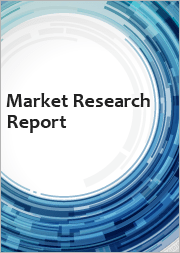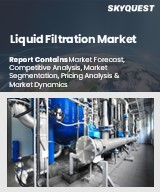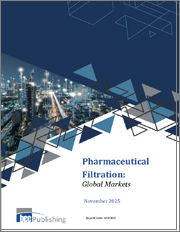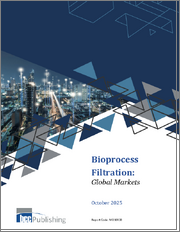
|
시장보고서
상품코드
1462624
여과 및 건조 장비 시장 전망(-2030년) : 기술별, 장비 유형별, 최종 사용자별, 지역별 세계 분석Filtration & Drying Equipment Market Forecasts to 2030 - Global Analysis By Technology (Centrifuges, Pusher Centrifuge and Other Technologies), Equipment Type (Full Automatic Equipment and Semi-Automatic Equipment), End User and By Geography |
||||||
Stratistics MRC에 따르면, 세계 여과 및 건조 장비 시장은 2023년 14억 달러로 평가되었고, 예측 기간 동안 연평균 10.5% 성장하여 2030년에는 28억 2,000만 달러에 달할 것으로 예상됩니다.
여과 장비는 액체와 기체에서 고체를 분리하는 데 사용되며 압력 여과, 진공 여과, 중력 여과 등 다양한 방법이 사용됩니다. 이 과정을 통해 불순물, 입자 및 오염 물질을 확실히 제거하여 제품의 품질과 순도를 향상시킬 수 있습니다. 여과 및 건조 장비는 제약, 화학, 식음료, 환경 공학 등 다양한 산업에서 중요한 구성 요소입니다. 여과 및 건조 장비는 모두 제조 공정에서 중요한 역할을 수행하여 효율성, 품질 표준 준수 및 전체 제품의 무결성에 기여합니다.
National Health Expenditure Data에 따르면, 미국의 메디케어 지출은 2021년 8.4% 증가하여 9,000억 달러에 달할 것으로 예상됩니다. 또한 메디케이드 지출은 2020년 대비 9.2% 증가한 7,340억 달러에 달할 것으로 예상됩니다. 캐나다 통계청에 따르면 식음료 가공 부문은 캐나다에서 두 번째로 큰 제조 부문입니다.
건강과 안전의 중요성
제약, 생명공학, 식품 가공 등의 산업에서 제품의 품질과 직원의 건강을 보장하기 위해 엄격한 안전 및 위생 규제를 우선시하는 경향이 증가하고 있습니다. 여과 및 건조 장비는 제품 및 공정에서 불순물, 오염 물질 및 수분을 제거하여 깨끗하고 무균적인 환경을 유지하는 데 중요한 역할을 합니다. 보다 안전하고 신뢰할 수 있는 제조 방법에 대한 수요가 증가함에 따라 제조업체들은 규제 기준을 충족하고 운영 효율성을 개선하기 위해 첨단 여과 및 건조 기술에 투자하고 있습니다. 또한, 새로운 질병과 전염병의 출현은 위생적인 제조 공정을 유지하는 것의 중요성을 강조하고 다양한 산업에서 여과 및 건조 장비에 대한 추가 투자를 촉진하는 원동력이 되고 있습니다.
높은 초기 투자
효과적인 여과 및 건조 공정에 필요한 첨단 기술과 특수 기계가 초기 투자 비용을 크게 억제합니다. 이러한 시스템에는 고급 필터, 정밀 제어 메커니즘, 에너지 집약적인 건조 방법 등 복잡한 부품이 포함되어 있어 초기 자본 지출을 증가시키는 경우가 많습니다. 또한 품질 관리 및 환경 보호에 대한 엄격한 규제 표준을 준수하는 것은 투자 부담을 더욱 증가시킵니다. 이러한 높은 초기 투자는 중소기업에 큰 진입장벽이 되어 잠재적 구매자가 새로운 여과 및 건조 솔루션에 대한 투자를 망설이게 할 수 있습니다.
식음료 가공의 확대
소비자 선호도가 더 건강하고 덜 가공된 식품으로 이동함에 따라 제품의 품질과 안전성을 유지하기 위한 고급 여과 기술에 대한 수요가 증가하고 있습니다. 또한, 식품 및 음료 제조업체들이 영양가를 유지하면서 부패하기 쉬운 제품을 효율적으로 보존할 수 있는 방법을 찾고 있기 때문에 건조 장비 시장도 이러한 성장의 혜택을 누리고 있습니다. 첨단 건조 기술은 수분 수준을 정밀하게 제어할 수 있어 보존 기간을 연장하고 제품의 안정성을 향상시킬 수 있습니다. 여과 및 건조 장비 제조업체들은 에너지 효율적이고 환경 친화적인 시스템을 개발하기 위해 기술 혁신을 추진하고 있으며, 이는 식음료 가공 분야 시장 성장을 더욱 촉진하고 있습니다.
기술적 혼란
여과 및 건조 장비 시장은 새로운 기술이 기존 방식과 관행에 도전하면서 기술 파괴라는 큰 위협에 직면해 있습니다. 첨단 소재, 나노기술, 로봇공학 등의 혁신은 여과 및 건조 공정의 효율성, 효과성, 지속가능성에 혁명을 일으키고 있습니다. 또한 인공지능(AI)과 머신러닝의 통합은 예측 유지보수, 운영 최적화 및 다운타임 감소를 가능하게 합니다.
COVID-19의 영향 :
코로나19는 여과 및 건조 장비 시장에 다양한 영향을 미쳤습니다. 초기에는 공급망과 제조 활동의 중단으로 인해 일시적인 후퇴가 발생하여 프로젝트와 설치가 지연되었습니다. 그러나 전염병이 확대됨에 따라 특히 의료 시설, 제약 및 식품 가공 산업에서 청결 및 위생에 대한 관심이 높아졌습니다. 또한 바이러스 확산을 완화하기 위해 실내 공간의 공기질을 개선해야 할 필요성으로 인해 다양한 분야에서 공기 여과 시스템에 대한 수요가 급증했습니다.
예측 기간 동안 원심분리기 부문이 가장 큰 비중을 차지할 것으로 예상됩니다.
여과 및 건조 장비 시장의 원심분리기 부문은 제약, 생명공학, 식음료, 화학 등 다양한 산업에서 효율적인 분리 및 건조 능력으로 인해 괄목할 만한 성장을 보이고 있습니다. 기술 발전으로 인해 더 높은 처리 능력, 향상된 자동화, 향상된 정확도를 갖춘 고급 원심분리기 모델이 개발되고 채택이 증가하고 있습니다. 또한, 제품 품질 및 안전에 대한 엄격한 규제는 신뢰할 수 있는 분리 및 정제 솔루션을 제공하는 원심분리기에 대한 수요를 더욱 촉진하고 있습니다.
예측 기간 동안 제약 분야가 가장 높은 CAGR을 나타낼 것으로 예상됩니다.
제약 분야는 전 세계 의약품 수요 증가와 엄격한 규제 요건으로 인해 괄목할 만한 성장세를 보이고 있습니다. 또한, 바이오 의약품과 개인 맞춤형 의료의 부상으로 인해 섬세한 생체 분자와 복잡한 제제를 처리할 수 있는 특수 장비의 필요성이 증가하고 있습니다. 또한 여과 재료와 건조 기술의 발전으로 제약업체는 공정 효율을 개선하고 오염 위험을 줄이며 제품 수율을 높일 수 있게 되었습니다. 또한, 코로나19 팬데믹으로 인해 견고한 제조 공정의 중요성이 부각되면서 백신 및 치료제 수요 급증에 대응하기 위한 최첨단 여과 및 건조 장비에 대한 투자가 촉진되고 있습니다.
가장 큰 점유율을 차지하는 지역
여과 및 건조 장비 시장은 환경 규제를 준수하고 배출을 최소화하기 위해 첨단 여과 기술에 투자하도록 각 산업계가 엄격한 환경 규제를 마련함에 따라 괄목할 만한 성장을 보이고 있습니다. 또한, 식품 및 음료 산업은 품질 관리와 안전 표준을 중시하고 있으며, 이는 제품 정화 및 보존을 위한 여과 시스템에 대한 투자에 박차를 가하고 있습니다. 또한, 자동화 및 IoT 통합과 같은 기술 발전으로 여과 및 건조 장비의 효율성과 신뢰성이 향상되고 있습니다. 또한, 이 지역은 화학, 재료 등의 분야에서 활발한 연구개발이 이루어지고 있어 기술 혁신과 제품 개발을 지원하기 위한 여과 및 건조 솔루션에 대한 수요가 증가하고 있습니다.
CAGR이 가장 높은 지역 :
아시아태평양은 특히 중국, 인도, 동남아시아 국가들의 급속한 산업화로 인해 괄목할만한 성장을 보이고 있습니다. 환경 보호 및 제품 품질에 대한 엄격한 규제는 제조 공정에서 첨단 여과 기술의 채택을 더욱 촉진하고 있습니다. 또한, 이 지역의 인구 증가와 가처분 소득 증가로 인해 소비가 증가하면서 생산 공정에서 효율적인 여과 및 건조 솔루션의 필요성이 증가하고 있습니다. 또한, 기술 발전과 자동화의 출현으로 여과 및 건조 장비의 효율성과 효율성이 향상되어 아시아태평양 시장 성장에 기여하고 있습니다.
무료 커스터마이징 제공:
이 보고서를 구독하는 고객은 다음과 같은 무료 맞춤화 옵션 중 하나를 사용할 수 있습니다.
- 기업 프로파일
- 추가 시장 기업의 종합적인 프로파일링(최대 3개사까지)
- 주요 기업의 SWOT 분석(최대 3개사)
- 지역 세분화
- 고객의 관심에 따른 주요 국가별 시장 추정치, 예측, CAGR(주: 타당성 확인에 따라 다름)
- 경쟁사 벤치마킹
- 제품 포트폴리오, 지리적 입지, 전략적 제휴를 기반으로 한 주요 기업 벤치마킹
목차
제1장 주요 요약
제2장 서문
- 개요
- 이해관계자
- 조사 범위
- 조사 방법
- 데이터 마이닝
- 데이터 분석
- 데이터 검증
- 조사 접근
- 조사 소스
- 1차 조사 소스
- 2차 조사 자료
- 전제조건
제3장 시장 동향 분석
- 성장 촉진요인
- 성장 억제요인
- 기회
- 위협
- 기술 분석
- 최종사용자 분석
- 신흥 시장
- COVID-19의 영향
제4장 Porter의 Five Forces 분석
- 공급 기업의 교섭력
- 바이어의 교섭력
- 대체품의 위협
- 신규 진출업체의 위협
- 경쟁 기업간 경쟁 관계
제5장 세계의 여과 및 건조 장비 시장 : 기술별
- Centrifuges
- Pusher Centrifuge
- Perforate Basket Centrifuge
- Peeler Centrifuge
- Agitated Nutsche Filter-Dyers (ANFD)
- 기타 기술
제6장 세계의 여과 및 건조 장비 시장 : 장비 유형별
- 전자동 장비
- 반자동 장비
제7장 세계의 여과 및 건조 장비 시장 : 최종사용자별
- 제약
- 식품 및 음료
- 물 및 폐수 처리
- 화학제품
- 기타 최종사용자
제8장 세계의 여과 및 건조 장비 시장 : 지역별
- 북미
- 미국
- 캐나다
- 멕시코
- 유럽
- 독일
- 영국
- 이탈리아
- 프랑스
- 스페인
- 기타 유럽
- 아시아태평양
- 일본
- 중국
- 인도
- 호주
- 뉴질랜드
- 한국
- 기타 아시아태평양
- 남미
- 아르헨티나
- 브라질
- 칠레
- 기타 남미
- 중동 및 아프리카
- 사우디아라비아
- 아랍에미리트(UAE)
- 카타르
- 남아프리카공화국
- 기타 중동 및 아프리카
제9장 주요 발전
- 계약/파트너십/협업/합작투자(JV)
- 인수와 합병
- 신제품 발매
- 사업 확대
- 기타 주요 전략
제10장 기업 프로파일링
- 3V Tech S.p.A.
- Amar Equipment Pvt. Ltd.
- Chem Flowtronics
- GMM Pfaudler
- Heinkel Process Technology GmbH
- HLE Glascoat
- Hosokawa Micron Powder Systems
- Jaygo Incorporated
- Promas Engineers PVT.LTD.
- Synovatic India
- Tsukishima Kikai Co. Ltd
- Zhejiang Yaguang Technology Co. Ltd.
LSH 24.05.10
According to Stratistics MRC, the Global Filtration & Drying Equipment Market is accounted for $1.40 billion in 2023 and is expected to reach $2.82 billion by 2030 growing at a CAGR of 10.5% during the forecast period. Filtration equipment is used to separate solids from liquids or gases, employing various methods such as pressure, vacuum, or gravity filtration. This process ensures the removal of impurities, particles, or contaminants, thereby enhancing product quality and purity. Filtration and drying equipment are crucial components in various industries, including pharmaceuticals, chemicals, food and beverage, and environmental engineering. Both filtration and drying equipment play vital roles in manufacturing processes, contributing to efficiency, compliance with quality standards, and overall product integrity.
According to the National Health Expenditure Data, U.S. medicare spending increased by 8.4% to USD 900 billion in 2021. Moreover, Medicaid spending has increased by 9.2% to USD 734 billion compared to 2020. According to Statistics Canada, the food and beverage processing sector is Canada's second-largest manufacturing sector.
Market Dynamics:
Driver:
Focus on health and safety
Industries such as pharmaceuticals, biotechnology, and food processing are increasingly prioritizing stringent health and safety regulations to ensure product quality and employee well-being. Filtration and drying equipment play a crucial role in maintaining clean and sterile environments by removing impurities, contaminants, and moisture from products and processes. As demand for safer and more reliable production methods rises, manufacturers are investing in advanced filtration and drying technologies to meet regulatory standards and improve operational efficiency. Moreover, the emergence of new diseases and pandemics underscores the importance of maintaining hygienic manufacturing processes, driving further investment in filtration and drying equipment across various industries.
Restraint:
High initial investment
The high initial investment restraint stems from the sophisticated technology and specialized machinery required for effective filtration and drying processes. These systems often involve intricate components, such as advanced filters, precision control mechanisms, and energy-intensive drying methods, driving up the initial capital outlay. Additionally, compliance with stringent regulatory standards for quality control and environmental protection further increases the investment burden. This high initial investment poses a significant barrier to entry for smaller players and may deter potential buyers from investing in new filtration and drying solutions.
Opportunity:
Expansion in food and beverage processing
As consumer preferences shift towards healthier, minimally processed foods, there's a growing demand for advanced filtration technologies to maintain product quality and safety. Moreover, the drying equipment market benefits from this expansion as food and beverage manufacturers seek efficient methods to preserve perishable products while maintaining their nutritional value. Advanced drying technologies enable precise control over moisture levels, resulting in extended shelf life and improved product consistency. Filtration and drying equipment manufacturers are innovating to develop energy-efficient and eco-friendly systems, further driving market growth in the food and beverage processing sector.
Threat:
Technological disruption
The filtration and drying equipment market faces a significant threat of technological disruption as emerging technologies challenge traditional methods and practices. Innovations such as advanced materials, nanotechnology, and robotics are revolutionizing the efficiency, effectiveness, and sustainability of filtration and drying processes. Additionally, the integration of artificial intelligence (AI) and machine learning enables predictive maintenance, optimizing operations, and reducing downtime.
Covid-19 Impact:
The COVID-19 pandemic has had a mixed impact on the filtration and drying equipment market. Initially, disruptions in supply chains and manufacturing activities led to temporary setbacks, causing delays in projects and installations. However, as the pandemic unfolded, there was a heightened focus on cleanliness and hygiene, particularly in healthcare facilities, pharmaceuticals, and food processing industries. Additionally, the need for improved air quality in indoor spaces to mitigate the spread of the virus led to a surge in demand for air filtration systems across various sectors.
The centrifuge segment is expected to be the largest during the forecast period
The centrifuge segment in the filtration and drying equipment market has experienced notable growth due to their efficient separation and drying capabilities across diverse industries such as pharmaceuticals, biotechnology, food and beverage, and chemicals. Technological advancements have led to the development of more advanced centrifuge models with higher throughput, improved automation, and enhanced precision, driving their adoption. Additionally, stringent regulations regarding product quality and safety have spurred the demand for centrifuges as they provide reliable separation and purification solutions.
The pharmaceutical segment is expected to have the highest CAGR during the forecast period
The pharmaceutical segment has experienced significant growth due to increasing demand for pharmaceutical products worldwide and stringent regulatory requirements. Moreover, the rise of biopharmaceuticals and personalized medicine has amplified the need for specialized equipment capable of handling sensitive biomolecules and complex formulations. Additionally, advancements in filtration materials and drying techniques have enabled pharmaceutical manufacturers to improve process efficiency, reduce contamination risks, and enhance product yields. Furthermore, the COVID-19 pandemic underscored the importance of robust manufacturing processes, driving investments in state-of-the-art filtration and drying equipment to meet surging demand for vaccines and therapeutics.
Region with largest share:
Filtration and Drying Equipment market has experienced notable growth due to stringent environmental regulations across industries to invest in advanced filtration technologies to ensure compliance and minimize emissions. Additionally, the food and beverage industry's focus on quality control and safety standards has spurred investment in filtration systems for product purification and preservation. Moreover, technological advancements such as automation and IoT integration have enhanced the efficiency and reliability of filtration and drying equipment. Furthermore, the region's robust research and development activities in sectors like chemicals and materials have increased demand for filtration and drying solutions to support innovation and product development.
Region with highest CAGR:
The Asia-Pacific region has experienced significant growth due to rapid industrialization, particularly in countries like China, India, and Southeast Asian nations. Stringent regulations regarding environmental protection and product quality have further propelled the adoption of advanced filtration technologies in manufacturing processes. Additionally, the region's expanding population and rising disposable incomes have boosted consumption, thereby driving the need for efficient filtration and drying solutions in production processes. Moreover, advancements in technology and the emergence of automation have enhanced the efficiency and effectiveness of filtration and drying equipment, contributing to market growth in the Asia-Pacific region.
Key players in the market
Some of the key players in Filtration & Drying Equipment market include 3V Tech S.p.A., Amar Equipment Pvt. Ltd., Chem Flowtronics, GMM Pfaudler, Heinkel Process Technology GmbH, HLE Glascoat, Hosokawa Micron Powder Systems, Jaygo Incorporated, Promas Engineers PVT.LTD., Synovatic India, Tsukishima Kikai Co. Ltd and Zhejiang Yaguang Technology Co. Ltd.
Key Developments:
In August 2023, GMM Pfaudler, a manufacturer of glass-lined equipment, has set its sights on acquisitions of $5-6 million, the successful completion of these acquisitions, will help the company to attain a worldwide presence.
In May 2023, Tsukishima Kikai Co Ltd says it will sign a business alliance agreement with Tokyo Century Corporation. Tsukishima Kikai says two companies will cooperate on power generation project, sewage treatment plants business, service supply and sale of singular machineries business.
Technologies Covered:
- Centrifuges
- Pusher Centrifuge
- Perforate Basket Centrifuge
- Peeler Centrifuge
- Agitated Nutsche Filter-Dyers (ANFD)
- Other Technologies
Equipment Types Covered:
- Full Automatic Equipment
- Semi-Automatic Equipment
End Users Covered:
- Pharmaceutical
- Food & Beverage
- Water and Wastewater Treatment
- Chemicals
- Other End Users
Regions Covered:
- North America
- US
- Canada
- Mexico
- Europe
- Germany
- UK
- Italy
- France
- Spain
- Rest of Europe
- Asia Pacific
- Japan
- China
- India
- Australia
- New Zealand
- South Korea
- Rest of Asia Pacific
- South America
- Argentina
- Brazil
- Chile
- Rest of South America
- Middle East & Africa
- Saudi Arabia
- UAE
- Qatar
- South Africa
- Rest of Middle East & Africa
What our report offers:
- Market share assessments for the regional and country-level segments
- Strategic recommendations for the new entrants
- Covers Market data for the years 2021, 2022, 2023, 2026, and 2030
- Market Trends (Drivers, Constraints, Opportunities, Threats, Challenges, Investment Opportunities, and recommendations)
- Strategic recommendations in key business segments based on the market estimations
- Competitive landscaping mapping the key common trends
- Company profiling with detailed strategies, financials, and recent developments
- Supply chain trends mapping the latest technological advancements
Free Customization Offerings:
All the customers of this report will be entitled to receive one of the following free customization options:
- Company Profiling
- Comprehensive profiling of additional market players (up to 3)
- SWOT Analysis of key players (up to 3)
- Regional Segmentation
- Market estimations, Forecasts and CAGR of any prominent country as per the client's interest (Note: Depends on feasibility check)
- Competitive Benchmarking
- Benchmarking of key players based on product portfolio, geographical presence, and strategic alliances
Table of Contents
1 Executive Summary
2 Preface
- 2.1 Abstract
- 2.2 Stake Holders
- 2.3 Research Scope
- 2.4 Research Methodology
- 2.4.1 Data Mining
- 2.4.2 Data Analysis
- 2.4.3 Data Validation
- 2.4.4 Research Approach
- 2.5 Research Sources
- 2.5.1 Primary Research Sources
- 2.5.2 Secondary Research Sources
- 2.5.3 Assumptions
3 Market Trend Analysis
- 3.1 Introduction
- 3.2 Drivers
- 3.3 Restraints
- 3.4 Opportunities
- 3.5 Threats
- 3.6 Technology Analysis
- 3.7 End User Analysis
- 3.8 Emerging Markets
- 3.9 Impact of Covid-19
4 Porters Five Force Analysis
- 4.1 Bargaining power of suppliers
- 4.2 Bargaining power of buyers
- 4.3 Threat of substitutes
- 4.4 Threat of new entrants
- 4.5 Competitive rivalry
5 Global Filtration & Drying Equipment Market, By Technology
- 5.1 Introduction
- 5.2 Centrifuges
- 5.3 Pusher Centrifuge
- 5.4 Perforate Basket Centrifuge
- 5.5 Peeler Centrifuge
- 5.6 Agitated Nutsche Filter-Dyers (ANFD)
- 5.7 Other Technologies
6 Global Filtration & Drying Equipment Market, By Equipment Type
- 6.1 Introduction
- 6.2 Full Automatic Equipment
- 6.3 Semi-Automatic Equipment
7 Global Filtration & Drying Equipment Market, By End User
- 7.1 Introduction
- 7.2 Pharmaceutical
- 7.3 Food & Beverage
- 7.4 Water and Wastewater Treatment
- 7.5 Chemicals
- 7.6 Other End Users
8 Global Filtration & Drying Equipment Market, By Geography
- 8.1 Introduction
- 8.2 North America
- 8.2.1 US
- 8.2.2 Canada
- 8.2.3 Mexico
- 8.3 Europe
- 8.3.1 Germany
- 8.3.2 UK
- 8.3.3 Italy
- 8.3.4 France
- 8.3.5 Spain
- 8.3.6 Rest of Europe
- 8.4 Asia Pacific
- 8.4.1 Japan
- 8.4.2 China
- 8.4.3 India
- 8.4.4 Australia
- 8.4.5 New Zealand
- 8.4.6 South Korea
- 8.4.7 Rest of Asia Pacific
- 8.5 South America
- 8.5.1 Argentina
- 8.5.2 Brazil
- 8.5.3 Chile
- 8.5.4 Rest of South America
- 8.6 Middle East & Africa
- 8.6.1 Saudi Arabia
- 8.6.2 UAE
- 8.6.3 Qatar
- 8.6.4 South Africa
- 8.6.5 Rest of Middle East & Africa
9 Key Developments
- 9.1 Agreements, Partnerships, Collaborations and Joint Ventures
- 9.2 Acquisitions & Mergers
- 9.3 New Product Launch
- 9.4 Expansions
- 9.5 Other Key Strategies
10 Company Profiling
- 10.1 3V Tech S.p.A.
- 10.2 Amar Equipment Pvt. Ltd.
- 10.3 Chem Flowtronics
- 10.4 GMM Pfaudler
- 10.5 Heinkel Process Technology GmbH
- 10.6 HLE Glascoat
- 10.7 Hosokawa Micron Powder Systems
- 10.8 Jaygo Incorporated
- 10.9 Promas Engineers PVT.LTD.
- 10.10 Synovatic India
- 10.11 Tsukishima Kikai Co. Ltd
- 10.12 Zhejiang Yaguang Technology Co. Ltd.
- 추가 시장 기업의 종합적인 프로파일링(최대 3개사까지)
- 주요 기업의 SWOT 분석(최대 3개사)
- 고객의 관심에 따른 주요 국가별 시장 추정치, 예측, CAGR(주: 타당성 확인에 따라 다름)
- 제품 포트폴리오, 지리적 입지, 전략적 제휴를 기반으로 한 주요 기업 벤치마킹
- 데이터 마이닝
- 데이터 분석
- 데이터 검증
- 조사 접근
- 1차 조사 소스
- 2차 조사 자료
- 전제조건
- 미국
- 캐나다
- 멕시코
- 독일
- 영국
- 이탈리아
- 프랑스
- 스페인
- 기타 유럽
- 일본
- 중국
- 인도
- 호주
- 뉴질랜드
- 한국
- 기타 아시아태평양
- 아르헨티나
- 브라질
- 칠레
- 기타 남미
- 사우디아라비아
- 아랍에미리트(UAE)
- 카타르
- 남아프리카공화국
- 기타 중동 및 아프리카
According to Stratistics MRC, the Global Filtration & Drying Equipment Market is accounted for $1.40 billion in 2023 and is expected to reach $2.82 billion by 2030 growing at a CAGR of 10.5% during the forecast period. Filtration equipment is used to separate solids from liquids or gases, employing various methods such as pressure, vacuum, or gravity filtration. This process ensures the removal of impurities, particles, or contaminants, thereby enhancing product quality and purity. Filtration and drying equipment are crucial components in various industries, including pharmaceuticals, chemicals, food and beverage, and environmental engineering. Both filtration and drying equipment play vital roles in manufacturing processes, contributing to efficiency, compliance with quality standards, and overall product integrity.
According to the National Health Expenditure Data, U.S. medicare spending increased by 8.4% to USD 900 billion in 2021. Moreover, Medicaid spending has increased by 9.2% to USD 734 billion compared to 2020. According to Statistics Canada, the food and beverage processing sector is Canada's second-largest manufacturing sector.
Market Dynamics:
Driver:
Focus on health and safety
Industries such as pharmaceuticals, biotechnology, and food processing are increasingly prioritizing stringent health and safety regulations to ensure product quality and employee well-being. Filtration and drying equipment play a crucial role in maintaining clean and sterile environments by removing impurities, contaminants, and moisture from products and processes. As demand for safer and more reliable production methods rises, manufacturers are investing in advanced filtration and drying technologies to meet regulatory standards and improve operational efficiency. Moreover, the emergence of new diseases and pandemics underscores the importance of maintaining hygienic manufacturing processes, driving further investment in filtration and drying equipment across various industries.
Restraint:
High initial investment
The high initial investment restraint stems from the sophisticated technology and specialized machinery required for effective filtration and drying processes. These systems often involve intricate components, such as advanced filters, precision control mechanisms, and energy-intensive drying methods, driving up the initial capital outlay. Additionally, compliance with stringent regulatory standards for quality control and environmental protection further increases the investment burden. This high initial investment poses a significant barrier to entry for smaller players and may deter potential buyers from investing in new filtration and drying solutions.
Opportunity:
Expansion in food and beverage processing
As consumer preferences shift towards healthier, minimally processed foods, there's a growing demand for advanced filtration technologies to maintain product quality and safety. Moreover, the drying equipment market benefits from this expansion as food and beverage manufacturers seek efficient methods to preserve perishable products while maintaining their nutritional value. Advanced drying technologies enable precise control over moisture levels, resulting in extended shelf life and improved product consistency. Filtration and drying equipment manufacturers are innovating to develop energy-efficient and eco-friendly systems, further driving market growth in the food and beverage processing sector.
Threat:
Technological disruption
The filtration and drying equipment market faces a significant threat of technological disruption as emerging technologies challenge traditional methods and practices. Innovations such as advanced materials, nanotechnology, and robotics are revolutionizing the efficiency, effectiveness, and sustainability of filtration and drying processes. Additionally, the integration of artificial intelligence (AI) and machine learning enables predictive maintenance, optimizing operations, and reducing downtime.
Covid-19 Impact:
The COVID-19 pandemic has had a mixed impact on the filtration and drying equipment market. Initially, disruptions in supply chains and manufacturing activities led to temporary setbacks, causing delays in projects and installations. However, as the pandemic unfolded, there was a heightened focus on cleanliness and hygiene, particularly in healthcare facilities, pharmaceuticals, and food processing industries. Additionally, the need for improved air quality in indoor spaces to mitigate the spread of the virus led to a surge in demand for air filtration systems across various sectors.
The centrifuge segment is expected to be the largest during the forecast period
The centrifuge segment in the filtration and drying equipment market has experienced notable growth due to their efficient separation and drying capabilities across diverse industries such as pharmaceuticals, biotechnology, food and beverage, and chemicals. Technological advancements have led to the development of more advanced centrifuge models with higher throughput, improved automation, and enhanced precision, driving their adoption. Additionally, stringent regulations regarding product quality and safety have spurred the demand for centrifuges as they provide reliable separation and purification solutions.
The pharmaceutical segment is expected to have the highest CAGR during the forecast period
The pharmaceutical segment has experienced significant growth due to increasing demand for pharmaceutical products worldwide and stringent regulatory requirements. Moreover, the rise of biopharmaceuticals and personalized medicine has amplified the need for specialized equipment capable of handling sensitive biomolecules and complex formulations. Additionally, advancements in filtration materials and drying techniques have enabled pharmaceutical manufacturers to improve process efficiency, reduce contamination risks, and enhance product yields. Furthermore, the COVID-19 pandemic underscored the importance of robust manufacturing processes, driving investments in state-of-the-art filtration and drying equipment to meet surging demand for vaccines and therapeutics.
Region with largest share:
Filtration and Drying Equipment market has experienced notable growth due to stringent environmental regulations across industries to invest in advanced filtration technologies to ensure compliance and minimize emissions. Additionally, the food and beverage industry's focus on quality control and safety standards has spurred investment in filtration systems for product purification and preservation. Moreover, technological advancements such as automation and IoT integration have enhanced the efficiency and reliability of filtration and drying equipment. Furthermore, the region's robust research and development activities in sectors like chemicals and materials have increased demand for filtration and drying solutions to support innovation and product development.
Region with highest CAGR:
The Asia-Pacific region has experienced significant growth due to rapid industrialization, particularly in countries like China, India, and Southeast Asian nations. Stringent regulations regarding environmental protection and product quality have further propelled the adoption of advanced filtration technologies in manufacturing processes. Additionally, the region's expanding population and rising disposable incomes have boosted consumption, thereby driving the need for efficient filtration and drying solutions in production processes. Moreover, advancements in technology and the emergence of automation have enhanced the efficiency and effectiveness of filtration and drying equipment, contributing to market growth in the Asia-Pacific region.
Key players in the market
Some of the key players in Filtration & Drying Equipment market include 3V Tech S.p.A., Amar Equipment Pvt. Ltd., Chem Flowtronics, GMM Pfaudler, Heinkel Process Technology GmbH, HLE Glascoat, Hosokawa Micron Powder Systems, Jaygo Incorporated, Promas Engineers PVT.LTD., Synovatic India, Tsukishima Kikai Co. Ltd and Zhejiang Yaguang Technology Co. Ltd.
Key Developments:
In August 2023, GMM Pfaudler, a manufacturer of glass-lined equipment, has set its sights on acquisitions of $5-6 million, the successful completion of these acquisitions, will help the company to attain a worldwide presence.
In May 2023, Tsukishima Kikai Co Ltd says it will sign a business alliance agreement with Tokyo Century Corporation. Tsukishima Kikai says two companies will cooperate on power generation project, sewage treatment plants business, service supply and sale of singular machineries business.
Technologies Covered:
- Centrifuges
- Pusher Centrifuge
- Perforate Basket Centrifuge
- Peeler Centrifuge
- Agitated Nutsche Filter-Dyers (ANFD)
- Other Technologies
Equipment Types Covered:
- Full Automatic Equipment
- Semi-Automatic Equipment
End Users Covered:
- Pharmaceutical
- Food & Beverage
- Water and Wastewater Treatment
- Chemicals
- Other End Users
Regions Covered:
- North America
- US
- Canada
- Mexico
- Europe
- Germany
- UK
- Italy
- France
- Spain
- Rest of Europe
- Asia Pacific
- Japan
- China
- India
- Australia
- New Zealand
- South Korea
- Rest of Asia Pacific
- South America
- Argentina
- Brazil
- Chile
- Rest of South America
- Middle East & Africa
- Saudi Arabia
- UAE
- Qatar
- South Africa
- Rest of Middle East & Africa
What our report offers:
- Market share assessments for the regional and country-level segments
- Strategic recommendations for the new entrants
- Covers Market data for the years 2021, 2022, 2023, 2026, and 2030
- Market Trends (Drivers, Constraints, Opportunities, Threats, Challenges, Investment Opportunities, and recommendations)
- Strategic recommendations in key business segments based on the market estimations
- Competitive landscaping mapping the key common trends
- Company profiling with detailed strategies, financials, and recent developments
- Supply chain trends mapping the latest technological advancements
Free Customization Offerings:
All the customers of this report will be entitled to receive one of the following free customization options:
- Company Profiling
- Comprehensive profiling of additional market players (up to 3)
- SWOT Analysis of key players (up to 3)
- Regional Segmentation
- Market estimations, Forecasts and CAGR of any prominent country as per the client's interest (Note: Depends on feasibility check)
- Competitive Benchmarking
- Benchmarking of key players based on product portfolio, geographical presence, and strategic alliances
Table of Contents
1 Executive Summary
2 Preface
- 2.1 Abstract
- 2.2 Stake Holders
- 2.3 Research Scope
- 2.4 Research Methodology
- 2.4.1 Data Mining
- 2.4.2 Data Analysis
- 2.4.3 Data Validation
- 2.4.4 Research Approach
- 2.5 Research Sources
- 2.5.1 Primary Research Sources
- 2.5.2 Secondary Research Sources
- 2.5.3 Assumptions
3 Market Trend Analysis
- 3.1 Introduction
- 3.2 Drivers
- 3.3 Restraints
- 3.4 Opportunities
- 3.5 Threats
- 3.6 Technology Analysis
- 3.7 End User Analysis
- 3.8 Emerging Markets
- 3.9 Impact of Covid-19
4 Porters Five Force Analysis
- 4.1 Bargaining power of suppliers
- 4.2 Bargaining power of buyers
- 4.3 Threat of substitutes
- 4.4 Threat of new entrants
- 4.5 Competitive rivalry
5 Global Filtration & Drying Equipment Market, By Technology
- 5.1 Introduction
- 5.2 Centrifuges
- 5.3 Pusher Centrifuge
- 5.4 Perforate Basket Centrifuge
- 5.5 Peeler Centrifuge
- 5.6 Agitated Nutsche Filter-Dyers (ANFD)
- 5.7 Other Technologies
6 Global Filtration & Drying Equipment Market, By Equipment Type
- 6.1 Introduction
- 6.2 Full Automatic Equipment
- 6.3 Semi-Automatic Equipment
7 Global Filtration & Drying Equipment Market, By End User
- 7.1 Introduction
- 7.2 Pharmaceutical
- 7.3 Food & Beverage
- 7.4 Water and Wastewater Treatment
- 7.5 Chemicals
- 7.6 Other End Users
8 Global Filtration & Drying Equipment Market, By Geography
- 8.1 Introduction
- 8.2 North America
- 8.2.1 US
- 8.2.2 Canada
- 8.2.3 Mexico
- 8.3 Europe
- 8.3.1 Germany
- 8.3.2 UK
- 8.3.3 Italy
- 8.3.4 France
- 8.3.5 Spain
- 8.3.6 Rest of Europe
- 8.4 Asia Pacific
- 8.4.1 Japan
- 8.4.2 China
- 8.4.3 India
- 8.4.4 Australia
- 8.4.5 New Zealand
- 8.4.6 South Korea
- 8.4.7 Rest of Asia Pacific
- 8.5 South America
- 8.5.1 Argentina
- 8.5.2 Brazil
- 8.5.3 Chile
- 8.5.4 Rest of South America
- 8.6 Middle East & Africa
- 8.6.1 Saudi Arabia
- 8.6.2 UAE
- 8.6.3 Qatar
- 8.6.4 South Africa
- 8.6.5 Rest of Middle East & Africa
9 Key Developments
- 9.1 Agreements, Partnerships, Collaborations and Joint Ventures
- 9.2 Acquisitions & Mergers
- 9.3 New Product Launch
- 9.4 Expansions
- 9.5 Other Key Strategies
10 Company Profiling
- 10.1 3V Tech S.p.A.
- 10.2 Amar Equipment Pvt. Ltd.
- 10.3 Chem Flowtronics
- 10.4 GMM Pfaudler
- 10.5 Heinkel Process Technology GmbH
- 10.6 HLE Glascoat
- 10.7 Hosokawa Micron Powder Systems
- 10.8 Jaygo Incorporated
- 10.9 Promas Engineers PVT.LTD.
- 10.10 Synovatic India
- 10.11 Tsukishima Kikai Co. Ltd
- 10.12 Zhejiang Yaguang Technology Co. Ltd.






